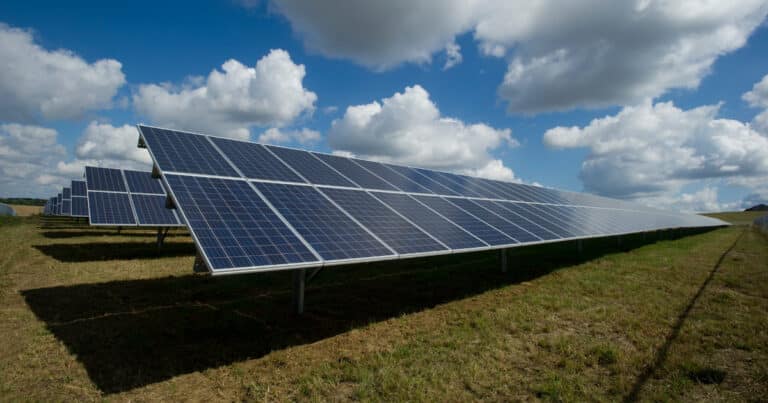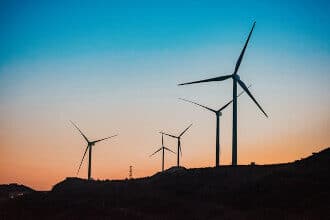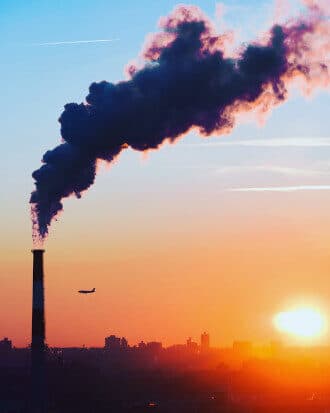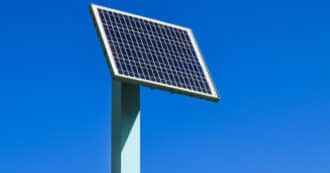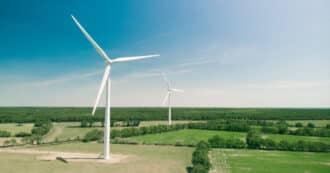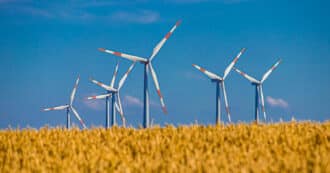By Aaron Norton – A renewable power source is one that will never run out in nature, because it naturally replenishes or recycles itself, and is included in the umbrella term “sustainable” energy source. A sustainable energy source is one that is able to be used for the foreseeable future, without depleting the source entirely.
Therefore, sustainable energy is an energy source that can be used without worry of it running out any time soon. Even though all renewable energy sources are considered sustainable, not all sustainable energy sources are considered forms of renewable energy.
Introduction to Renewable Energy Sources
Solar and wind energy both are considered renewable energy sources, because they both technically come from the sun’s rays, which aren’t going to disappear for many lifetimes to come. So, as long as the sun shines on the earth, we’ll continue to be able to harness solar and wind power, and generate electricity with them.
Solar Energy
Solar power is produced in large solar energy systems, by using photovoltaic (PV) solar panels that house large numbers of solar cells that generate power by absorbing energy and radiation from the sun, which is then converted into electricity. The most ideal places for solar panels depends on the geography and what type of environment (rural, suburban, or urban) the solar panels are going to be located in.
In rural communities it’s ideal to place PV panels in a flat, open space, facing south and tilted at a 30 or 40 degree angle to maximize their exposure to sunlight, especially during the summer months. In urban areas, it’s possible and effective to place PV panels on the tops of skyscrapers and other tall buildings, as long as they’re not spending a significant amount of time in the shade of surrounding structures.
Wind Energy
Wind energy is produced in wind farms comprised of wind turbines that generate electricity as the wind blows through the wind farm and turns the blades of the turbines, which are connected to a generator. Wind power is harnessed indirectly from sunlight, as wind itself is caused by the uneven heating of the Earth and atmosphere by the sun as a result of uneven and inconsistent topographical and geographical features of the Earth’s surface.
Places that are heated more than others have warmer air which is lower pressure than that of cooler areas that have cooler, higher pressure air. The cool, high pressure air then moves towards the warmer, more high pressure areas, creating wind as we know it to be.
The most optimal locations to build wind turbines are, naturally, in areas that have the highest and most consistent average wind speeds. These locations are mostly in rural areas, ideally at high elevations, and, according to the US EIA, are most favorable “on the tops of smooth, rounded hills; open plains and water; and mountain gaps that funnel and intensify wind”. Locations near the coast are also optimal locations for a wind turbine and electricity generation because of strong offshore wind that’s good for turning the blades of the turbines.
The History of Solar and Wind Power
Both wind and solar power have been harnessed and used by humans for millennia for a variety of different functions. Wind power has been used to propel sails and sailboats, power water pumps, and even grind grain and produce food. It wasn’t until European settlers came to America and the West that wind and solar technologies advanced into the systems that perform the functions that they do today.
Clean energy from sustainable and renewable energy sources has become much more popular in the past decade, not only for residential use, but also on a utility scale, with solar energy accounting for “28% of the world’s renewable electricity generation capacity, just ahead of wind with 27%“. Because the popularity of wind and solar power has increased, so has accessibility to the infrastructure required in order to utilize both forms of renewable energy.
Advantages of Solar and Wind
There are many advantages of wind and solar power plants that make them more favorable than fossil fuels like coal and natural gas, the main one being that they’ll never run out or stop producing electricity, whereas the supply of fossil fuels is very finite. They are also favorable over types of sustainable electricity and energy like bioenergy and biofuels, as even those will eventually stop being able to replenish themselves.
Wind farms and solar energy systems don’t produce any significant carbon or greenhouse gas emissions, as opposed to large power plants that use traditional sources of energy, which emit huge amounts of pollution into the atmosphere. At a time where the effects of climate change are visible all around us in virtually every corner of the world, sustainable and renewable energy are important things to invest in, in order to combat the very real effects of climate change that nearly every person on earth is living with.
Disadvantages of Solar and Wind
Perhaps the most obvious disadvantage of these forms of sustainable and clean energy is the amount of land required to house both solar panels and wind turbines, the physical infrastructures required for electricity generation. In order to produce significant amounts of solar power, and be considered a utility scale power plant, a large number of PV panels, and land to house them, are required, which isn’t possible for some communities. Also, in order to generate wind energy, wind turbines are required to “catch” the wind and then convert it to electricity, which are seldom established in a residential setting at this point.
Despite the increased use of sustainable and renewable sources over the past few decades, the amount of electricity generated in the United States was still only a fraction of all electricity generation in the country, sitting at about 3% in the year 2020. In many local and national economies, it’s much easier for businesses to stick with forms of traditional energy that they’ve been using for decades
Clean Energy and Religion
Wind Energy and Religion
Rabbi Yonatan Neril, the founder of the ICSD, and Rabbi Leo Dee speak about what Judaism has to say concerning Local Energy in Volume 2 of their Eco Bible:
Numbers 15:32 – Once, when the Israelites were in the wilderness, they came upon a man gathering wood on the Sabbath day.
According to Jewish law, picking up fallen pieces of wood on Shabbat is not a sin punishable by death, yet this man was given the death penalty. Rabbi Don Isaac Abarbanel (15th–16th century) suggests, “Since the desert is a place where wood is not easily found, it is possible that he went outside the permitted limits of the camp on Shabbat and gathered the wood back in.” This suggests that he transported sticks from the public to the private domain and traveled too far outside his camp to collect fuel – both forbidden acts of “work” on Shabbat. Distributed solar power has the lowest transmission loss, as it can be sited near the customer (consider a solar panel on your roof). Wind power, despite generally being sourced further from the customer, has the highest efficiency of power conversion.
Solar Energy and Religion
The Lubavitcher Rebbe spoke strongly for the need to develop solar energy capabilities in America:
There is especially a great availability of solar heat in the south of country. It would be fairly simple to transport this energy throughout the country. This energy source requires very little time, relative to the time needed to develop other energy sources which require heating, etc. How will it be possible to succeed? It will be successful if it is built upon God’s assistance, upon belief in God. Then they will be able to ignore the claims and libels proposed by those who might personally profit by impeding this development.
Fighting for clean energy like solar and wind shouldn’t be in conflict with belief in God. In fact, it is our belief in God that the Lubavitcher Rebbe believed would help us overcome the lies and distortions of the fossil fuel industry that are impeding our progress to this day. May God help us to bring the Lubavitcher Rebbe’s vision to life soon of a world powered by sustainable energy.
* Featured image source

